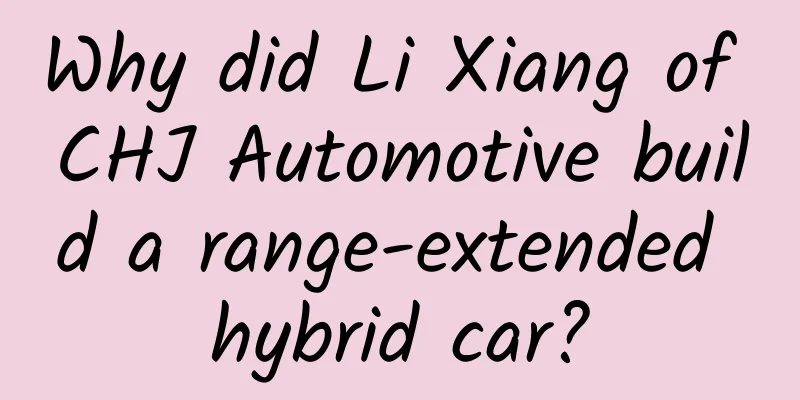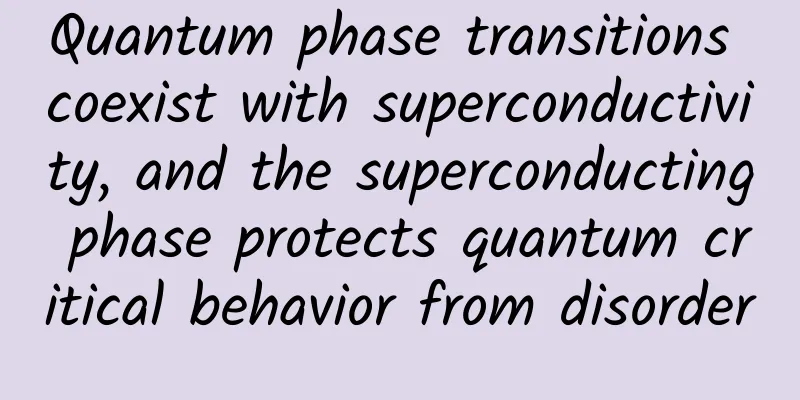Why did Li Xiang of CHJ Automotive build a range-extended hybrid car?

|
Recently, Li Xiang of CHJ Automotive Group officially launched a new car called Ideal ONE, and Li Xiang vowed that the price would be controlled within RMB 400,000. Although the price is prohibitive for me, I still want to discuss Li Xiang's car because it is different from previous electric cars and is said to have a range of 700 kilometers. Is a range-extended vehicle also an electric vehicle? What does it mean for an electric car to run 700 kilometers? Tesla can only run 500 kilometers at present. How did it get this 700 kilometers? It turns out that this new car is not a 100% pure electric car, but a range-extended hybrid car. So what is an extended-range hybrid vehicle (hereinafter referred to as an extended-range vehicle)? An extended-range vehicle is equivalent to installing a range extender on a pure electric vehicle. This range extender is simply a fuel engine. However, unlike the engine on an ordinary car, the engine of an extended-range vehicle is only used to generate electricity, not to drive the car. When the power in the range-extended vehicle's battery is used up, the fuel engine starts working to charge the electric vehicle, allowing it to continue running. Everyone knows that current pure electric vehicles cannot travel far, but Li Xiang's car can be refueled and powered by electricity, just like the original fuel car, and can go anywhere. But here comes the question, if this car burns oil, is it still an electric car? CHJ Automotive is a new car-making power, and don’t new car-making powers all make pure electric cars? Can Li Xiang’s car, which burns oil, still be considered an electric car? The answer is yes. This is not what I said, it is recognized by the country. The "Automotive Industry Investment Management Regulations (Draft for Comments)" issued by the National Development and Reform Commission in July this year stipulates that pure electric vehicle investment projects include pure electric vehicles, extended-range pure electric vehicles, fuel battery vehicles and other investment projects. In other words, the state has explicitly stipulated that extended-range vehicles are also considered electric vehicles. The reason for this regulation is actually very simple. Although the extended-range vehicle also burns oil, its fuel engine is only used to generate electricity and does not directly drive the vehicle. The extended-range vehicle is just a modification of an electric vehicle, but it is still an electric vehicle. Electric vehicles are powered by electricity, there is nothing wrong with that. You can say that Li Xiang played a marginal ball, but this marginal ball is allowed by the country. Li Xiang's attempt to skirt this issue is to solve the problem that pure electric vehicles cannot travel far. With the advent of extended-range vehicles, are pure electric vehicles going to be out of fashion? Since extended-range vehicles are also electric vehicles and can travel farther, should the country give up on developing pure electric vehicles? Of course not. Why? Because China lacks oil. China currently relies on imports for 7 out of 10 barrels of oil it uses. If a war breaks out one day or other countries become hostile to China and threaten China with oil, China will be in a passive position. Oil is the blood of modern industry. Without it, the entire society will be paralyzed. Therefore, China cannot be so dependent on oil imports. China has less oil, but more coal. And coal can generate electricity. If all cars use electricity instead of oil, China can import much less oil every year. This is the most important reason why China develops pure electric vehicles. Although the range-extended vehicle is also an electric vehicle, it still needs to burn oil. So although it can travel farther than a pure electric vehicle, it cannot replace a pure electric vehicle. Although pure electric vehicles cannot run far, they are not always that way. Tesla can now run 500 kilometers. If the battery energy density is higher, the motor and electronic control are more efficient, the body is lighter, and the air conditioning, brakes, and steering are more energy-efficient, pure electric vehicles can run farther. Many people are worried that there are not enough charging piles and charging is inconvenient. However, charging piles are not technically difficult and belong to infrastructure construction. Since the country is willing to subsidize pure electric vehicles, it will strongly support the construction of charging stations and charging piles. China is also an infrastructure maniac and is very good at infrastructure construction. It is only a matter of time before charging stations are as dense as gas stations. At present, a unified charging platform has been established, and the charging interfaces of different charging pile operators are becoming more and more unified. When there are enough charging stations and charging is convenient enough, electric vehicles can be charged in time, and short battery life will no longer be a problem. Although extended-range vehicles can travel farther, they consume more fuel. Not only do they consume more fuel than pure electric vehicles, they consume more fuel than fuel vehicles when traveling on highways and long distances. What should I do now that electric cars can’t travel far? But now there are not enough charging stations and the range of electric vehicles is not enough. The country wants to promote pure electric vehicles. What should we do? This requires hybrid vehicles. Extended-range vehicles are also considered a type of hybrid vehicle. Currently, the most popular type on the market is the plug-in hybrid vehicle (hereinafter referred to as the plug-in hybrid vehicle). An extended-range vehicle is equivalent to an electric vehicle with a range extender (simply understood as a fuel engine), while a plug-in hybrid vehicle is equivalent to a fuel vehicle with an electric motor. For extended-range vehicles, only the electric motor can drive the vehicle, while for plug-in hybrid vehicles, both the electric motor and the fuel engine can drive the vehicle. Since both have batteries, both extended-range and electric vehicles can use only electricity for short trips. Both plug-in and hybrid vehicles are subsidized if their electric range exceeds 50km, so both can actually meet the needs of urban commuting. And extended-range vehicles generally have larger batteries. However, for urban grocery shopping, the batteries of both plug-in hybrid and extended-range vehicles are sufficient. However, when driving long distances or on highways, plug-in hybrids and extended-range vehicles are not very fuel-efficient. This is because hybrids are heavier than pure electric vehicles and fuel vehicles because they have both electric motors and fuel engines. They consume more fuel when driving on highways and long distances. Electric vehicles have advantages when driving in urban areas, where frequent stops and starts can save more energy. Fuel vehicles are most efficient and more fuel-efficient when driving at high speeds. For extended-range vehicles, fuel consumption is particularly high at high speeds. This is because the fuel engine of the extended-range vehicle does not directly drive the vehicle, but first generates electricity, which then drives the electric motor to drive the vehicle. In this process, a lot of energy is wasted. Plug-in hybrid vehicles are better at highway speeds because their fuel engines can directly drive the vehicle, which is more fuel-efficient than range-extended vehicles. However, plug-in hybrid vehicles will charge their batteries at highway speeds, making the vehicle slower to drive. In other words, both plug-in hybrid and extended-range vehicles are fuel-efficient in urban areas, but their performance on long highway distances is slightly worse. However, both types of cars can be charged, and both have a demand for charging piles. In this way, promoting these two types of cars can not only save some fuel, but also drive the construction of charging piles and contribute to the promotion of pure electric vehicles. In fact, plug-in hybrids and extended-range electric vehicles are only transitional products from fuel vehicles to pure electric vehicles, and pure electric vehicles are the ultimate development direction. This also shows that, in general, the competitors of extended-range vehicles are not pure electric vehicles but plug-in hybrid vehicles. Why are there so few extended-range vehicles on the market? Pure electric vehicles have seen rapid growth in sales in recent years due to national policy support and high subsidies. This year, the growth rate of plug-in hybrid vehicles has surpassed that of pure electric vehicles. Unlike plug-in hybrid vehicles which are becoming more and more popular, extended-range vehicles have not been well received by car companies. Why is that? As mentioned above, plug-in hybrid is to add an electric motor to a fuel vehicle. Traditional car companies are very good at fuel vehicles, and adding an electric motor is not a difficult thing. Extending the range is to add a fuel engine to an electric car, but this is troublesome. Electric vehicles are new to most car companies, and they need to develop new platforms. The fuel engine required for range extension is also troublesome. Because the original fuel engine is used to drive the car, and the fuel engine for range extension is used to generate electricity. This makes it difficult to use it directly. Developing a fuel engine specifically for power generation will further increase the difficulty of development. Moreover, as a transitional product, manufacturers are unwilling to spend money to make it because it is likely to become obsolete in a few years. Although the government recognizes that extended-range vehicles are electric vehicles, the subsidy standards for extended-range vehicles are the same as those for plug-in hybrid vehicles. Since both plug-in and extended-range vehicles are just transitional products, plug-in vehicles are easier to develop and the subsidies are the same, so car companies are naturally more willing to make plug-in hybrid vehicles. In fact, the principle of the extended-range vehicle is very simple, that is, an electric vehicle plus a range extender, and the technical difficulty is not more difficult than the plug-in hybrid. However, the plug-in hybrid can use the technology of the original fuel vehicle, and the commercialization is fast and the cost is low. Naturally, car manufacturers are unwilling to develop troublesome plug-in hybrids. In fact, it is not surprising that car manufacturers take the easy way out. Developing an extended-range vehicle requires extra time and cost, which not only slows down the product launch, but also makes it more expensive than similar plug-in hybrid vehicles. The high price means fewer buyers, and the extended-range vehicle market is not large, so car companies are naturally less enthusiastic about developing it. Over time, the extended-range electric vehicle has become increasingly neglected. At first, plug-in hybrids and extended-range electric vehicles may have their own advantages and disadvantages in terms of fuel efficiency and other performance, but as more people make plug-in hybrids, the technology of plug-in hybrids will advance faster, and the performance of the vehicles will get better and better. The gap between extended-range electric vehicles and plug-in hybrids has widened day by day. Extended-range vehicles are difficult to build, so why does Li Xiang still want to make them? Traditional car companies are different from new car manufacturers. Traditional car companies have experience in producing fuel vehicles and can easily develop plug-in hybrids. Because pure electric vehicles are the ultimate development direction, coupled with generous government subsidies, traditional car companies naturally vigorously develop pure electric vehicles. New car manufacturers have no experience in manufacturing fuel vehicles, so plugging in is less labor-saving. Because new car manufacturers focus on developing smart cars, electric vehicles are more suitable as smart car platforms than fuel vehicles. In addition, with subsidies, new car manufacturers generally do not develop plug-in hybrids, but directly develop pure electric vehicles. CHJ is also a new force in car manufacturing, so it will not choose plug-in hybrid. But Li Xiang is worried about the range of pure electric vehicles, so he chose the extended-range route. Although the extended-range vehicle burns oil, it is still an electric vehicle platform, which does not hinder the manufacture of smart cars. The difficulty of extending the range will make the extended-range vehicle more expensive, but Li Xiang is building a luxury car within 400,000 yuan. The rich are more concerned about the intelligence level and endurance of the car. As for the price and the fuel wasted by the extended-range vehicle at high speed, it is not too important. As a winner of Toutiao's Qingyun Plan and Baijiahao's Bai+ Plan, the 2019 Baidu Digital Author of the Year, the Baijiahao's Most Popular Author in the Technology Field, the 2019 Sogou Technology and Culture Author, and the 2021 Baijiahao Quarterly Influential Creator, he has won many awards, including the 2013 Sohu Best Industry Media Person, the 2015 China New Media Entrepreneurship Competition Beijing Third Place, the 2015 Guangmang Experience Award, the 2015 China New Media Entrepreneurship Competition Finals Third Place, and the 2018 Baidu Dynamic Annual Powerful Celebrity. |
>>: Huawei is going to make chips. Does that mean AI startups will be out of business?
Recommend
President of NIO: New cars will be launched by the end of the year, and models below 300,000 yuan will not be launched in the near future
Since its birth, the domestic new energy vehicle ...
What is the meaning of "fighting fire with fire" in forest fire rescue? Won't it make the fire bigger?
On May 12, 2023, the Science Popularization China...
Xiaohongshu product analysis report!
Xiaohongshu has accumulated a user word-of-mouth ...
The Office app on Android gets a new recording feature
The Office mobile app for Android has recently ga...
An Xiaoyao's "Male God Transformation Plan" transforms you into a charming boy and easily chases the girl you love
We have to say NO to our above selves! Although w...
What are the processes for building a website in Yinchuan? Things to note when building a website in Yinchuan
What are the processes for building a website in ...
After seeing the official pictures of the new Geely Boyue, I would like to ask if I have to pay extra to pick up the car this year?
Geely recently released the official photos of th...
Pet cloning: The cost of "resurrecting" a pet is the killing of countless animals
The principle of pet cloning seems simple. Take a...
The L size has been changed to the S size again! Why do woolen sweaters always shrink?
A warm wool sweater It is a must-have item in win...
Do you always feel a mouthful of phlegm stuck in your throat every morning? It is mostly related to these 4 diseases
"Cough! Cough! Cough!" "Xiao Wang,...
Comprehensive understanding of iOS static library development
[[148702]] Introduction In enterprise development...
Headline delivery: What to do if the account volume is unstable?
1. The account volume is unstable and the planned...
Is the information flow promotion effect not good? Maybe you overlooked this!
Written in front This article is based on the gam...
High incidence in summer! Two lightning accidents in one week, please keep this lightning protection manual
Thunderstorms are frequent in summer, and two lig...
How much is the price for being an agent of Qingxu Perfume Mini Program? Qingxu perfume applet agent price inquiry
How much does it cost to be an agent of Qingxu Pe...

![A large amount of Qianchuan running material "production formula" [with script plan]](/upload/images/67cc01dd4049e.webp)







